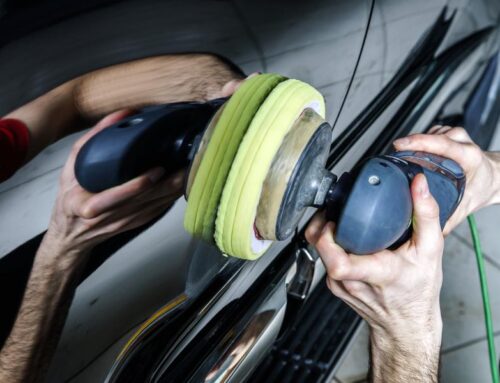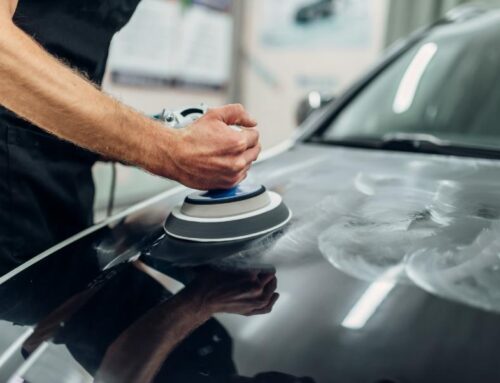Leather is a luxurious and durable material used to make many of our favorite items, from furniture upholstery to car interiors. To ensure that leather remains in the best condition possible, it’s important to know what the best thing is for conditioning it.
After all, using improper products can actually damage your leather rather than protect it! In this blog post we will answer “the best thing to condition leather with?” by exploring benefits of conditioning your leather goods as well as providing tips on choosing and applying the right product for maximum protection. We will also discuss how proper maintenance ensures you get the most out of whatever item you are caring for.
Table of Contents:
- What is Leather?
- Benefits of Conditioning Leather
- Choosing the Right Product
- Application Tips
- Maintenance Tips
- FAQs in Relation to What is the Best Thing to Condition Leather With?
- Conclusion
What is Leather?
Leather is a natural material that has been used for centuries to make clothing, shoes, and other items. It’s made from the hides of animals such as cows, sheep, goats, pigs, and even deer. Leather is strong and durable but also flexible which makes it ideal for many applications.
Leather needs to be conditioned in order to maintain its strength and flexibility over time. Conditioning leather helps keep it soft and supple while protecting it from cracking or drying out due to exposure to sunlight or extreme temperatures. The conditioner also helps prevent dirt buildup on the surface of the leather which can cause discoloration if left unchecked.
When choosing a product for conditioning your leather goods you should look for one specifically designed for use on leather products like auto upholstery or furniture covers as these are formulated with ingredients that won’t damage the material over time like some generic cleaners might do. Additionally you should always test any product in an inconspicuous area before using it on your item just to make sure there are no adverse reactions between the cleaner/conditioner and your specific type of leather item(s).
Application tips when conditioning your leather include applying small amounts at a time with a clean cloth or brush until all areas have been covered evenly then allowing them to absorb into the material before buffing off any excess residue with another clean cloth afterwards. You should never saturate any area as this could lead to water spots forming later down the line so take care not too apply too much conditioner at once!
Maintenance tips after conditioning your car’s interior include wiping away dust regularly with a damp microfiber cloth followed by treating spills immediately with either plain warm water (for food-based stains) or specialized cleaning products (for oil-based stains). Avoid using harsh chemicals such as bleach which can damage both fabric surfaces and dyed colors over time – instead opt for mild detergents designed specifically for use on automotive interiors whenever possible. Regular maintenance will help extend life expectancy of your vehicle’s interior fabrics, so remember to take proper care of them every now and then.
Leather is a strong and durable material, which when properly cared for can last for many years. Conditioning leather with the right product will help to keep it looking great and prolong its lifespan. Let’s look at the benefits of conditioning leather next.
Benefits of Conditioning Leather
It’s known for its durability and luxurious look. However, leather can become dry and brittle over time if it isn’t properly cared for. Conditioning leather helps keep it looking great and extends its life significantly.
One of the main benefits of conditioning leather is that it prevents cracking or splitting due to age or exposure to sunlight. Leather conditioners contain oils which help keep the fibers flexible so they don’t break down as quickly when exposed to heat or cold temperatures. The oils also protect against fading from UV rays, helping your leather last longer without losing its color or texture.
Conditioning also helps prevent staining on your leather goods by creating a barrier between them and any liquids that may come into contact with them such as water or oil-based products like lotions or makeup removers. This will help maintain the appearance of your item by preventing dirt buildup in hard-to-reach places like seams and creases where cleaning can be difficult.
Another benefit of conditioning is that it makes your item easier to clean when necessary because dirt won’t stick as easily to conditioned surfaces compared with those left untreated over time which can become sticky from body oils, dust particles, etc.. Cleaning becomes much simpler since you won’t have to scrub away at stubborn stains anymore!
Finally, conditioning will improve the overall feel of your item making it softer and more comfortable while still maintaining its strength – something especially important if you own furniture made out of leather! Not only does this make sitting on couches more enjoyable but also increases their lifespan since they are less likely to suffer damage from regular use due excessive wear on stiffer materials not treated with conditioner regularly enough over time .
In conclusion, there are many benefits associated with conditioning leather. These include increased longevity through protection against cracking or splitting caused by age or exposure to sunlight; improved stain resistance; easier cleaning; and enhanced comfortability and aesthetic appeal. All of these result in an extended lifetime for any product made out of this timeless material.
Leather conditioning is an important part of car detailing, as it helps to keep leather looking new and feeling soft. Next, we’ll look at how to choose the right product for your leather care needs.
Choosing the Right Product
When it comes to conditioning leather, choosing the right product is essential. Natural products are made from natural ingredients such as beeswax and lanolin, while synthetic products are typically petroleum-based. Both have their advantages and disadvantages.
Natural products tend to be more expensive than synthetic ones but they can provide a deeper level of protection for your leather surfaces. They also don’t contain any harsh chemicals that could damage the material over time, making them a safer option for those with sensitive skin or allergies. On the downside, natural conditioners may not last as long as synthetics so you may need to reapply them more often in order to maintain the same level of protection.
Synthetic conditioners are generally cheaper than natural ones and they offer good protection against dirt and moisture without damaging your leather surfaces like some chemical-based cleaners might do. However, these types of conditioners can sometimes leave an unpleasant odor on your car’s interior which can be difficult to remove if left unchecked for too long. Additionally, many synthetic conditioners contain silicone which can make it harder for other treatments (such as waxes) to adhere properly when applied afterwards so this should be taken into consideration before using one of these products on your vehicle’s leather surfaces.
Overall, both natural and synthetic conditioners have their own benefits depending on what kind of results you’re looking for from treating your car’s leather upholstery or trim pieces; just make sure you read all labels carefully before purchasing any product.
When it comes to conditioning leather, choosing the right product is essential for achieving the desired results. In the next section, we’ll look at tips on how to properly apply these products.
Application Tips
Leather is a durable and attractive material used in many automotive interiors. To keep it looking its best, regular conditioning is necessary. Applying leather conditioner correctly can help to preserve the material’s natural oils and protect against cracking or fading over time.
Choosing the Right Product: When selecting a leather conditioner, look for one that is specifically designed for automotive use. Avoid products with harsh chemicals or solvents as these can damage the leather surface over time. It’s also important to make sure you choose a product that won’t leave any residue on your car’s interior surfaces after application.
Application Tips: Before applying any product, be sure to clean the area first with an appropriate cleaner such as mild soap and water or a specially formulated auto detailing solution like Leather Cleaner & Conditioner from Chemical Guys® . Once cleaned, allow the surface to dry completely before beginning application of conditioner. Apply small amounts of product using either a soft cloth or brush depending on what works best for your particular situation. Work in circular motions until all areas are covered evenly but avoid excess product which can cause staining if left unattended too long before wiping off any excess residue with another clean cloth afterwards .
After conditioning, it is important to regularly maintain your leather by cleaning it every few weeks with an appropriate cleaner and reapplying conditioners when needed (typically once every 3-6 months). This will help ensure that your vehicle’s interior remains protected from dirt, dust and other contaminants while preserving its original luster for years to come.
Once you have applied the product, allow it to dry before using your vehicle again. Now let’s look at some maintenance tips to keep your leather looking great.
Maintenance Tips
Maintaining leather after conditioning is essential for keeping it looking and feeling its best. Leather is a natural material that requires special care to keep it in top condition. Here are some tips on how to maintain your leather after conditioning:
1. Avoid Direct Sunlight: Exposure to direct sunlight can cause the leather’s color to fade over time, so try to keep your car out of direct sunlight as much as possible when not in use. If you do need to park outside, make sure you have a cover or shade available for protection from the sun’s rays.
2. Clean Regularly: To keep your leather looking its best, clean it regularly with a damp cloth or microfiber towel using gentle circular motions and mild soap if necessary. Make sure all excess moisture is wiped away afterwards with another dry cloth or towel so that no water spots remain on the surface of the leather.
3. Use Protectants: Using protectants such as waxes and sprays can help protect against dirt, dust, and other contaminants that could damage the finish of your vehicle’s interior surfaces over time if left unchecked. Be sure to read any instructions carefully before applying these products so you don’t accidentally damage any part of your car’s interior while trying to protect it!
4 . Keep It Dry : Moisture can be damaging for both fabric and leather interiors alike, so make sure you avoid getting them wet whenever possible by keeping windows closed during rainstorms or snowfalls – even if they’re just light showers! Additionally, never leave wet items like umbrellas inside your car since this could lead to mold growth which will ruin both fabrics and upholstery materials alike over time if left unchecked..
Vacuuming often helps remove dirt particles from hard-to-reach places within your vehicle’s interior surfaces where they may otherwise accumulate over time leading to premature wear and tear due to age alone rather than usage itself. Therefore, regular vacuuming is an important part of maintaining both fabric and leather interiors alike.
FAQs in Relation to What is the Best Thing to Condition Leather With?
What is best conditioner for leather?
The best conditioner for leather depends on the type of leather you have. For smooth, finished leathers like those found in luxury cars, a cream-based conditioner is ideal. This will help to keep the material soft and supple while protecting it from dirt and dust. For unfinished or suede leathers, an oil-based conditioner is recommended as it helps to nourish the material without leaving any residue behind. Whichever product you choose, make sure that it’s specifically designed for use on automotive leather so that your car’s interior remains looking its best!
What is the best oil to condition leather?
The best oil to condition leather is a high-quality, natural oil such as neatsfoot or mink oil. These oils are specifically designed to penetrate the leather and provide nourishment without leaving an oily residue. Neatsfoot and mink oils will help keep your leather soft, supple, and protected from cracking or fading over time. They can also be used on other materials like vinyl, canvas, and suede for added protection against wear and tear.
Can I use Vaseline to condition leather?
No, Vaseline is not recommended for conditioning leather. It can cause discoloration and damage the finish of the leather over time. A better option would be to use a specialized leather conditioner specifically designed for auto detailing purposes. This will help protect your car’s interior from cracking, fading, and other signs of wear and tear while also providing a glossy shine that will last longer than Vaseline-treated surfaces.
Is there a natural leather conditioner?
Yes, there are natural leather conditioners available. These products are designed to nourish and protect the leather from cracking or fading due to UV exposure, dirt, and other environmental factors. Natural ingredients such as beeswax, jojoba oil, coconut oil, lanolin wax and carnauba wax can be used to help restore the original look of your vehicle’s interior leather surfaces. When applied correctly these natural conditioners will keep your car looking like new for years to come.
Conclusion
In conclusion, when it comes to the best thing to condition leather with, there are many options available. It is important to choose a product that is specifically designed for leather and not something intended for other materials. Additionally, proper application and maintenance techniques should be followed in order to ensure that your leather remains in good condition. With the right product and care, you can keep your leather looking its best!
Are you looking for the best way to condition and protect your car’s leather interior? Look no further! Phoenix Car Detailing offers professional auto detailing services that can help restore, clean, and maintain your vehicle’s leather. Our experienced team of professionals use only the highest quality products to ensure long-lasting protection against dirt, dust, UV rays and other damaging elements. Contact us today for a free consultation on how we can make sure your car looks its best!




